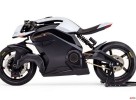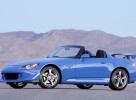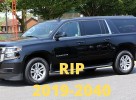Nissan introduced the 2016 Maxima sedan Thursday at the New York International Auto Show, cementing in place a unique new look unveiled with the Murano crossover at last year's show. The automaker hasn't officially named its new design language, but, from front to back, it starts with what the company is calling the "V-motion" grille and "boomerang lights" and moves through a series of muscular bulges and swells along the hood and flanks toward the vehicle's rear. The most distinctive feature, perhaps, is the C-pilar, which has been blacked out to give the roof a floating effect.
It's a bold look for Nissan's flagship sedan, and the automaker said the look was meant to reinforce the car's status as its "4-door sports car." The curvy exterior lines are lightly mirrored on the interior by a number of suggestive swoops (accented as they are by plastic faux wood trim) and instrumentation that bend in toward the driver.
Shiro Nakamura, Nissan's design chief, showed us around the new car and talked about some of its design cues and changes coming to the rest of the company's model lineup.
AWN: What was your inspiration for this design language?
SN: The inspiration was airflow. It's like when smoke rolls smoothly over the body in the wind tunnel. It starts at the front and has a nice floating character line. It gives a nice, airy feeling - very light. The interior is designed like a sports car. Everything is driver-oriented.
AWN: We noticed that the hood and front fenders have a few noticeable bulges. What was your intention there?
SN: It shows the power and energy of the car - this car is very powerful with the 300-horsepower V6 engine.
AWN: Were there any facets of past Maximas that came up when you were designing the new model?
SN: No. This design is looking forward, not back. With the 370Z and GT-R we have to respect the history of those models, but with the Maxima, we don't have a specific design heritage and we're much more free to do new things. This is a very important car for the top of the sedan lineup, and the Murano is the top of the crossover lineup. This design will cascade into the other models.
AWN: How will you apply this look to other sedans like the Versa and Sentra?
SN: We won't lose the character of the individual models - we don't want a cookie cutter look - but within two or three years, you will see this design in all our cars. You will see the V-motion grille, the headlights, the floating roof - the wind tunnel look will be there.
AWN: How have you applied your design philosophy to Nissan's trucks?
SN: Truck customers are a very specific and important market, and our trucks have to be very robust.
AWN: Across the market, truck grilles seem to have grown to enormous proportions, and we noticed that the new Titan has a particularly large one. Is there a sort of grille arms race going on?
SN: I'm not sure bigger is better, but in any case, the presence of the front grille is important to truck customers - it's a symbol of power. Lots of our truck guys in the U.S. said, 'Make the truck grille bigger!'"
AWN: What about small trucks? Will Nissan revamp or replace the Frontier in response to General Motors' new Chevrolet Colorado and GMC Canyon mid-size pickups?
SN: The small truck market has been getting smaller. Thirty years ago, there was much more demand. We introduced a small pickup in Australia and Thailand - the Navarro - but we'll have to see if that model will come to the U.S. Maybe the small truck market will improve.
See Now: OnePlus 6: How Different Will It Be From OnePlus 5?



























